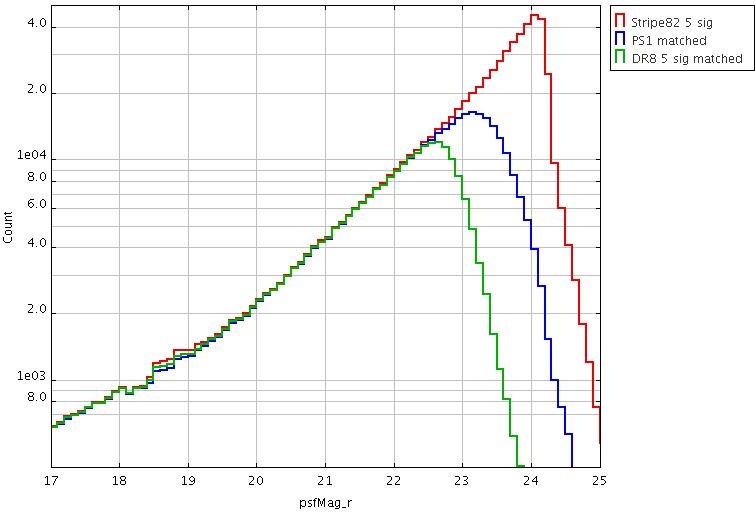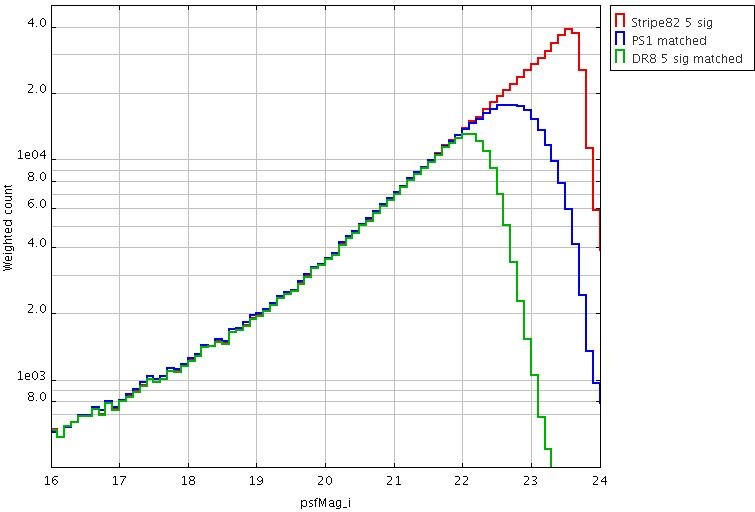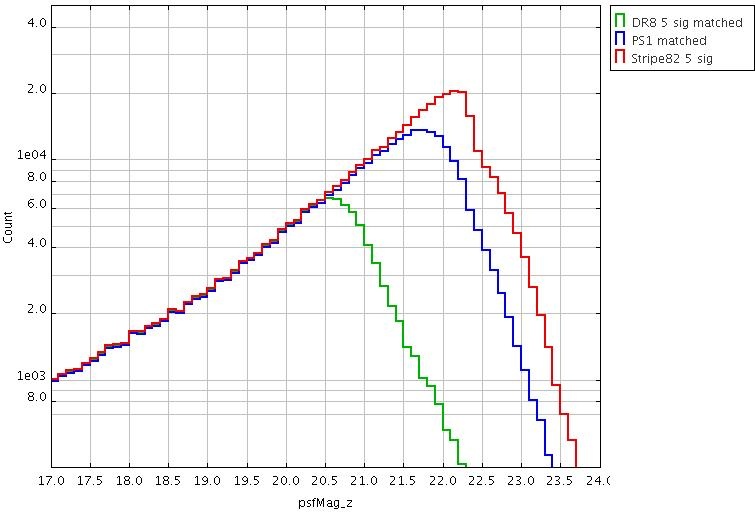Page History
...
| Table of Contents |
|---|
The Pan-STARRS project
What is Pan-STARRS?
...
The Panoramic Survey Telescope and Rapid Response System (Pan-STARRS) is an wide-field astronomical imaging and data processing facility developed at the University of Hawaii's Institute for Astronomy. Pan-STARRS1 (PS1) is the first telescope of Pan-STARRS to be completed and is the basis for DR1 and DR2. The PS1 survey used a 1.8 meter telescope and its 1.4 Gigapixel camera (GPC1; see PS1 GPC1 camera) to image the sky in five broadband filters (g, r, i, z, y). The PS1 Science Consortium funded the operation of the Pan-STARRS1 telescope, situated at Haleakala Observatories near the summit of Haleakala in Hawaii, from 2010 to 2014, and the data released in DR1 and DR2 are based on these observations.
What types of data were obtained?
Pan-STARRS1 has carried out a set of distinct synoptic imaging sky surveys including the 3pi Steradian Survey and the Medium Deep Survey in 5 bands (grizy). On average, about 12 individual epochs (called warps) were taken in each filter at a given position, which are then stacked to obtain deep static images of the sky. The mean 5-sigma point source limiting sensitivities in the individual grizy epochs are (22.0, 21.8, 21.5, 20.9, 19.7) respectively. The mean 5-sigma point source limiting sensitivities in the stacked 3pi Steradian Survey in grizy are (23.3, 23.2, 23.1, 22.3, 21.4) respectively. The upper bound on the systematic uncertainty in the photometric calibration across the sky is 7-12 millimag depending on the bandpass.
How does PS1 compare to other surveys such as the Sloan Digital Sky Survey (SDSS)?
Metcalfe et al. MNRAS 435, 1825 (2013) - has a detailed comparison of the PS1 Small Area Survey 2 data (a test 3pi region taken under optimal conditions) with SDSS. Here are plots comparing 5-sigma counts from SDSS DR8, PS1-SAS2 and Stripe 82. This is a best-case scenario. Generally speaking, averaged over the whole sky, PS1 is similar in depth to SDSS in g and r, ~0.5 deeper in i and ~1 mag deeper in z (for point sources).
Which data is availabe in which data release?
DR1
- Stacked images
- Mean and stack photometry
DR2
- Warp images (=individual epochs)
- Photometry of warped images
PS1 data access
What should I know about the current data release?
...




